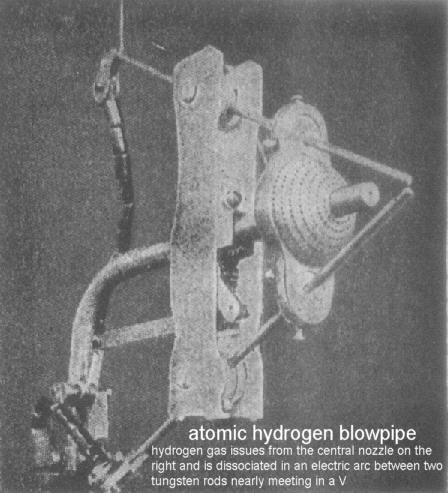Another thing Langmuir discovered, while noodling around with Hydrogen and high voltage, was the Hydrogen Spark Gap. These were useful in the construction of early oscillators, such as Tesla Coils, and are still used today.
Tesla thought that there were at least two kinds of electrical waves. Transverse, which you read about in Physics textbooks now, and Longitudinal, which you never hear about.
Nowadays, electromagnetic waves are though of as being Transverse. That is, they oscillate in a direction perpendicular to the direction the wave is traveling. An example of a transverse wave, I suppose, would be an ocean wave as it comes towards the shore. The wave is moving toward the shore, but the top of the wave is going up -- 90 degrees from the direction the wave is going.
An example of a Longitudinal Wave is a sound wave traveling through air. It consists of layers of compressed and rare-ified air. Imagine it like a sandwich with various layers of things in it. That's the compressed and uncompressed air. If you were to stick a toothpick in the top of the sandwich, that's the direction in which the sandwich is moving -- along the axis of the toothpick.
Here's an interesting film in which old Hydrogen Spark Gaps are used in a piece of Tesla technology to generate Longitudinal Waves.
Tesla Longitudinal Electricity Brought to you by the wonderful folks at
Borderlands Science Research.




